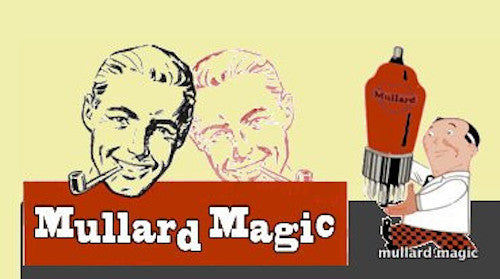
ZONE REFINING OF GERMANIUM FOR YOUR OC71 etc. -
Share
A pal of mine, knowing I am a chemist decided to bring me this photograph from his time at Mullard Semiconductors - he thought the Dreschel bottles in the background would float my boat but in actuality it's the process being undertaken that piqued my interest. My pal told me that this was an Orgone Accumulator - silly boy - but we know different!!
What we have here is a photograph taken in 1955 at the Mullard semiconductor materials laboratory with a Process Engineer purifying an ingot of Germanium for semiconductor manufacturing by a process known as Zone Refining, an elegant method which depends on the concentration of impurity solutes in the liquid phase due to a low partition coefficient.

And here's how it works: -
A germanium ingot is placed in graphite container called a boat which in turn is placed inside a silica tube under an argon or nitrogen atmosphere. A molten zone is created in the ingot by passing it through an RF heated zone which raises a portion of the ingot to 932oC which melted the germanium and as the solubility of any impurities is higher in the liquid than the solid phase, the impurities tend to concentrate in the molten zone which gradually moves down the ingot, taking the majority of the impurities with it until they are eventually concentrated at one end of the ingot.
The impure end is 'lopped off' and the process successively repeated until a 99.995% pure germanium ingot remains. The process was quite slow with transit of the ingot progressing at 1cm/hour so purification could take some time. This photograph was taken only 5 years after this process was originally invented by Dr. W Phann at Bell Laboratories in the 'States. The process is still in use today with silicon for chip wafers being refined in the same way, however, the process has been refined (sic) over the years to be much faster as a continuous process with new material being added as the impure bit is removed rather than the slower batch process you see here.
Interestingly enough, a similar process known as Zone Remelting was used to put impurities back in to the germanium ingot with a high degree of homogeneity to 'dope' it with antimony and/or arsenic to inbue negative, n-type semiconduction or conversely aluminium and/or boron to imbue positive, p-type semiconduction.
